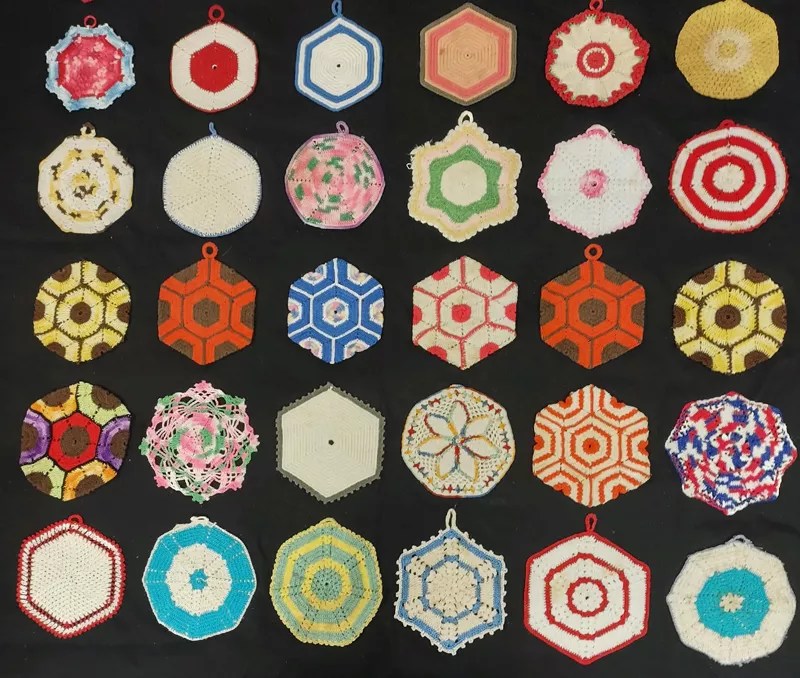
Phil Bender

Audio By Carbonatix
“Our town seemed deserted. But dwelling in that isolation we began to dream. A run-down, gold-rush-era mansion became a venue for punk rock bands. Empty warehouses became artist studios and the once unremarkable-seeming dive bars and diners deep within the city became our gathering places, our churches where we defined our own religions…when Denver was our city.”
That’s the world local writer Jill Carstens recalls so eloquently in her new memoir, Getting Over Vivian, which briefly touches on that volcanic era of Denver’s underground art communities as a backdrop to her own personal story.
Back then, the streets of what is now known as LoHi were quiet and empty, but artists were teeming inside the hulking brick buildings lining Platte Street, claiming studio space with few restrictions. Photographer and art-scene historian Mark Sink took over the original Samsonite factory at 1553 Platte Street, where he rented 10,000 square feet for $150 a month. After leaving Denver for Andy Warhol’s Factory in New York, he later returned to Platte Street to host “wild-ass parties” with “punk-rockers and debutantes” for Interview magazine, Sink told us in 2016.
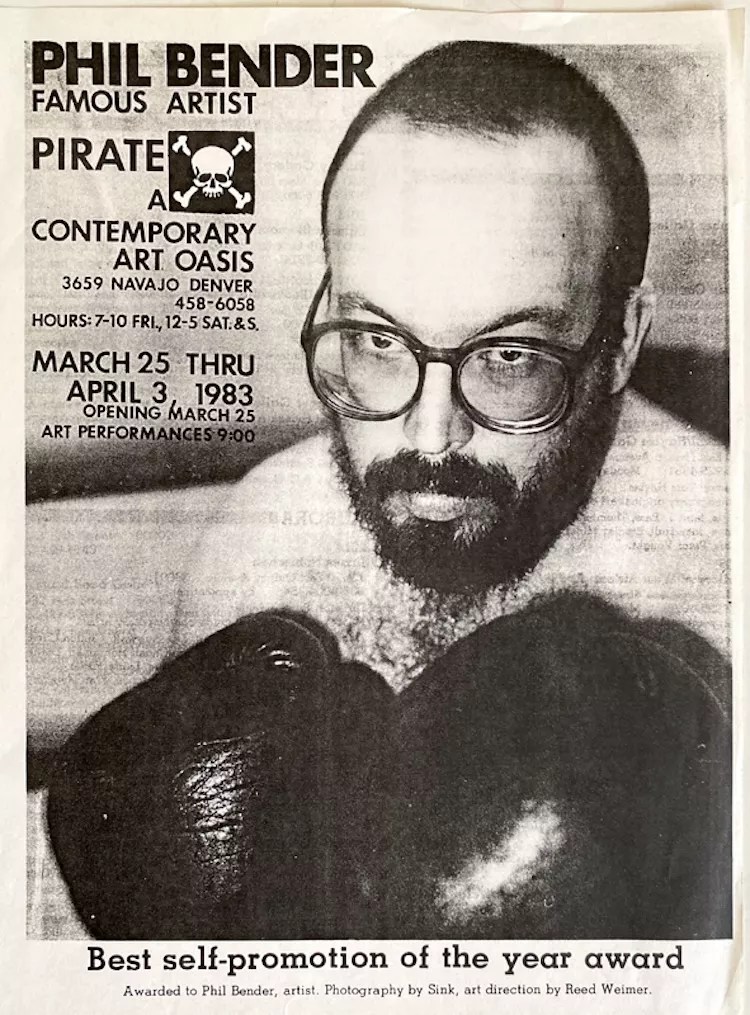
Phil Bender of Pirate.
Mark Sink
Denver, make your New Year’s Resolution Count!
We’re $10,000 away from reaching our $50,000 year-end fundraising goal. Your support could be what pushes us over the top. If our work has kept you informed and connected this year, please consider making a contribution today.
“Dozens of artists got their start there,” Sink recalls. “Phil Bender and his Pirate Gallery hosted my first show when it was located at 16th and Market streets.” Pirate later relocated not so far from there on the Northside, where the Navajo Street Art District grew up in a block of buildings secured by Pirates Reed Weimer and Chandler Romeo. When the block became too expensive for co-ops, an exodus to Lakewood decimated the Northside’s hold on galleries.
But in the present, the whisper of a renaissance is blowing back into Highland, led by BRDG Project, which secured and moved into an incredible, evolving 8,000-square-foot space on Tejon Street last August. So far, so good, says BRDG co-director Brett Matarazzo, who is delighted to have seen so many people drop by the gallery just to see what’s going on inside.
Early on in BRDG Project’s stay in LoHi, Carol Keller – who’d once run a photography gallery on Boulder Street – stepped in, asking, “Who’s doing this?” and launched into a lesson about the significance of LoHi in the Denver art scene. “I didn’t know the history,” Matarazzo recalls. “She really gave us an idea. She showed us the artifacts.”
Ironically, BRDG Project began fundraising and searching for the right space after losing what was a temporary space on Platte Street in the spring of 2022. Keller’s memories gave Matarazzo the idea that north Denver should be the gallery’s next stop.
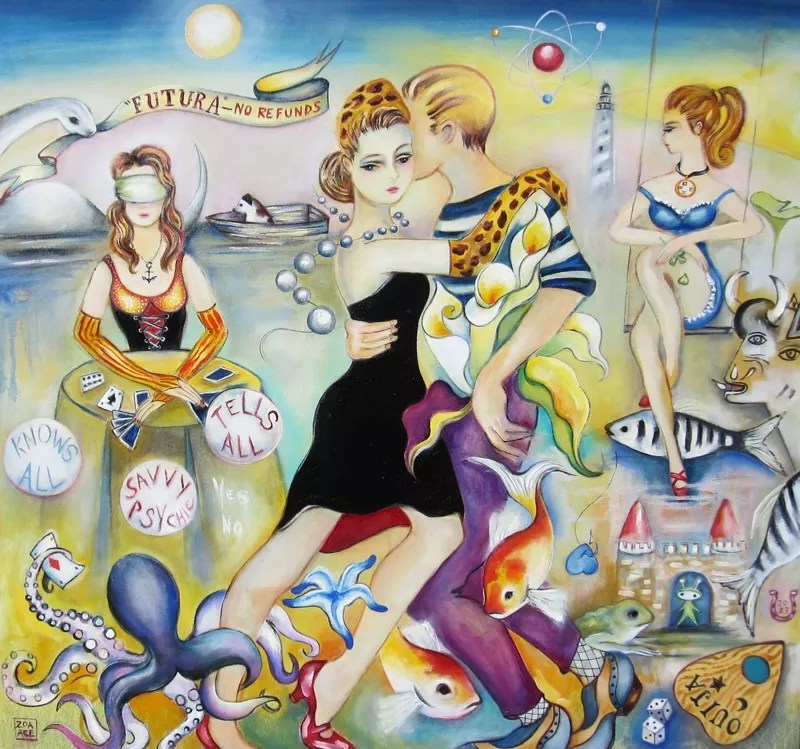
Zoa Ace, “Futura.”
Zoa Ace
To Matarazzo, who lives in the Highland neighborhood, it only made sense to sidestep into the Northside. “My happy idea was that the neighborhood needed it back – art has to be in these neighborhoods,” Matarazzo says. “In the first week here, I met three neighbors down the street I had never met before. Within a few weeks of opening, people started stopping in. My premise was that we needed a place here for people to congregate.
“Perhaps we jumped in with more passion than sense,” he adds. The new building, which last served as a church, was funky but “set up perfectly for us. We have two big garage doors up front that just say, ‘Come in,'” Matarazzo notes.
Envisioned as more than an art gallery, BRDG Project has already made efforts to add elements of performance to complement art shows. And beyond those open doors, the gallery has ample studio space, three exhibition rooms and a yet-untouched, 2,000-square-foot garage perfect for renting to an arts organization.
Matarazzo has also scoped out other art studios in the area – including NINE dot ARTS, Jack Ludlum’s photography studio, a new clay space called City Mud and more – that might be interested in joining BRDG for competition-free Second Friday openings to unite the neighborhood.
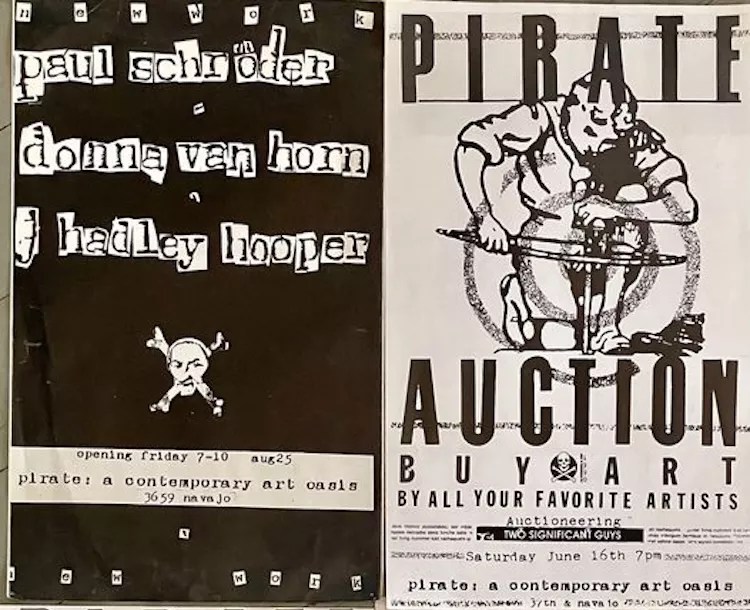
BRDG Project remembers Pirate and Northside co-ops with a throwback exhibition.
Courtesy of Jill Hadley Hooper
To draw interest in the idea of rebirth on the Northside, BRDG Project’s new exhibition, Roots of an Era: Mixtape to the Old North Denver Art Scene, unites all these elements, including Carstens’s book, by telling the old stories and adding to the new one. The exhibit opens on the second Friday of January; there will be a panel discussion with the artists on Saturday, January 20.
Matarazzo credits Carstens as a mover and shaker in getting the exhibition off the ground. As part of the opening reception, she’ll read relatable excerpts from Getting Over Vivian. “She captures that sense of loss, memory and history of wonderful, simple times,” he says. Carstens was also instrumental in gathering artists from the period to participate.
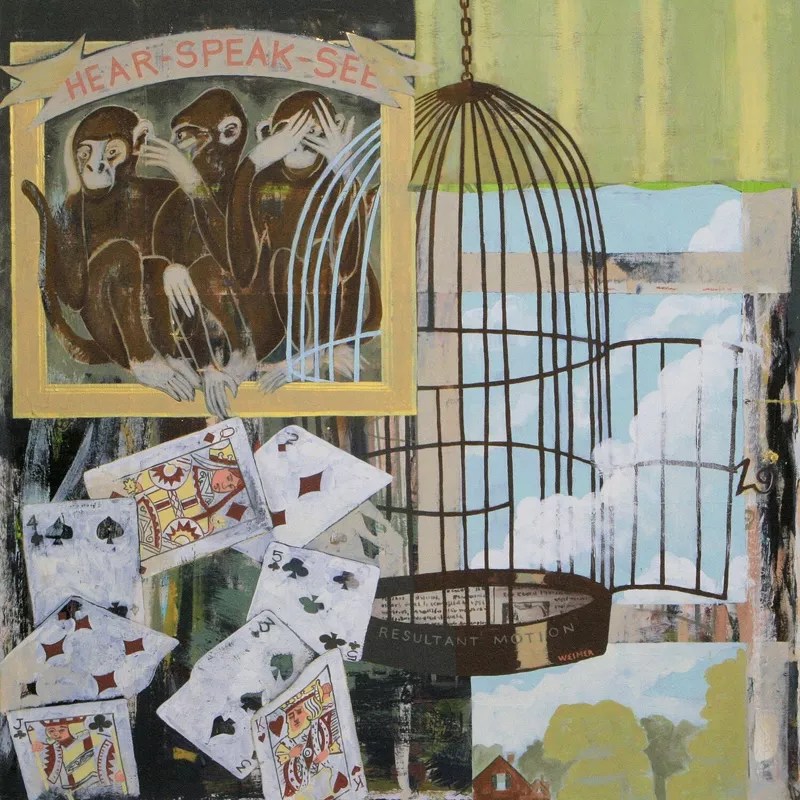
Reed Weimer, “Resultant Motion.”
Reed Weimer
The show of new and old works by founding artists will also include a living wall of posters and ephemera. Artists Weimer and Romeo have brought a bounty of history and memories to the exhibit, as well as Sink and Pirate founder Phil Bender. “People recognize the emotional and fundamental history of Navajo Street through Phil,” says Matarazzo.
Not only are old exhibition street fliers and materials included, but Matarazzo suggests surprise artifacts might include the original door to Pirate, from when it was an “Art Oasis,” as well as the defunct Patsy’s Inn marquee from down the block on Navajo Street.
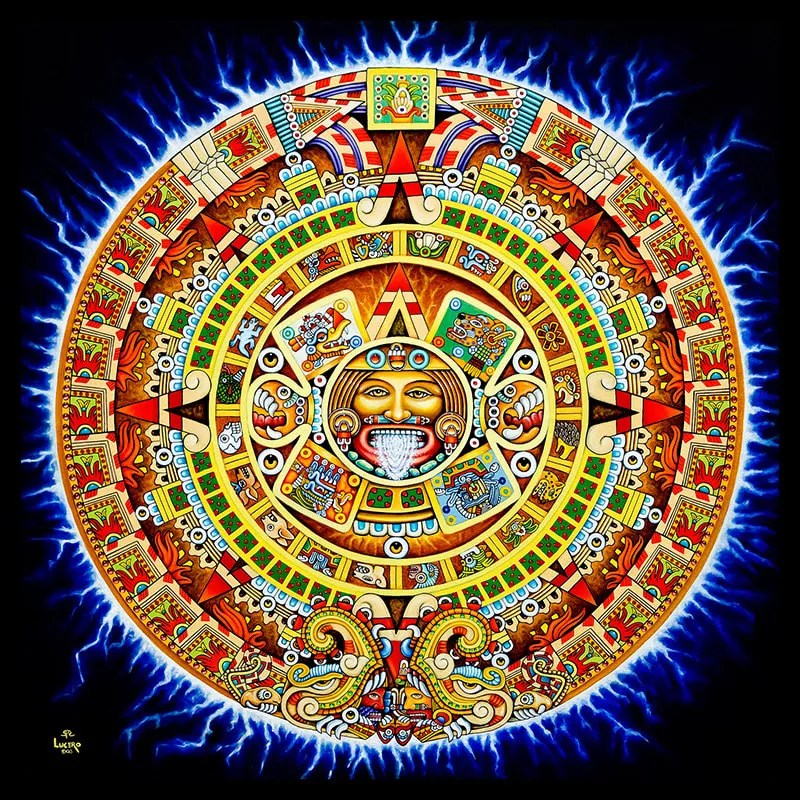
Stevon Lucero’s “Aztec Calendar.”
Stevon Lucero
It’s also important to note that the show is inclusive of artists from the Chicano movement, which was centered around La Raza Park in the ’60s and ’70s and the original Chicano Humanities and Arts Council gallery. To that end, artists Arlette Lucero and the late Stevon Lucero and muralist Jerry Jaramillo all have artworks in Roots of an Era.
“It’s necessary for a new group of artists to show how great it is to know where you’ve come from,” Matarazzo says. “So we did the heavy lifting and included the Northside’s Chicano art history, too. Having essentially grown up here, I’m interested in knowing how all the original cultures – Italians, Chicanos, artists – melded with one another. How did they co-exist?”
It’s all a primer in learning how to get along in the same neighborhood in 2024.
Roots of an Era: Mixtape to the Old North Denver Art Scene, Friday, January 12, through February 4. Opening reception: Friday, January 12, 6 to 10 p.m. (reading by Jill Carstens at 7:30 p.m.). Westword editor Patricia Calhoun will moderate an artist panel discussion at 5 p.m. Saturday, January 20. BRDG Project, 3300 Tejon Street, brdgproject.com.